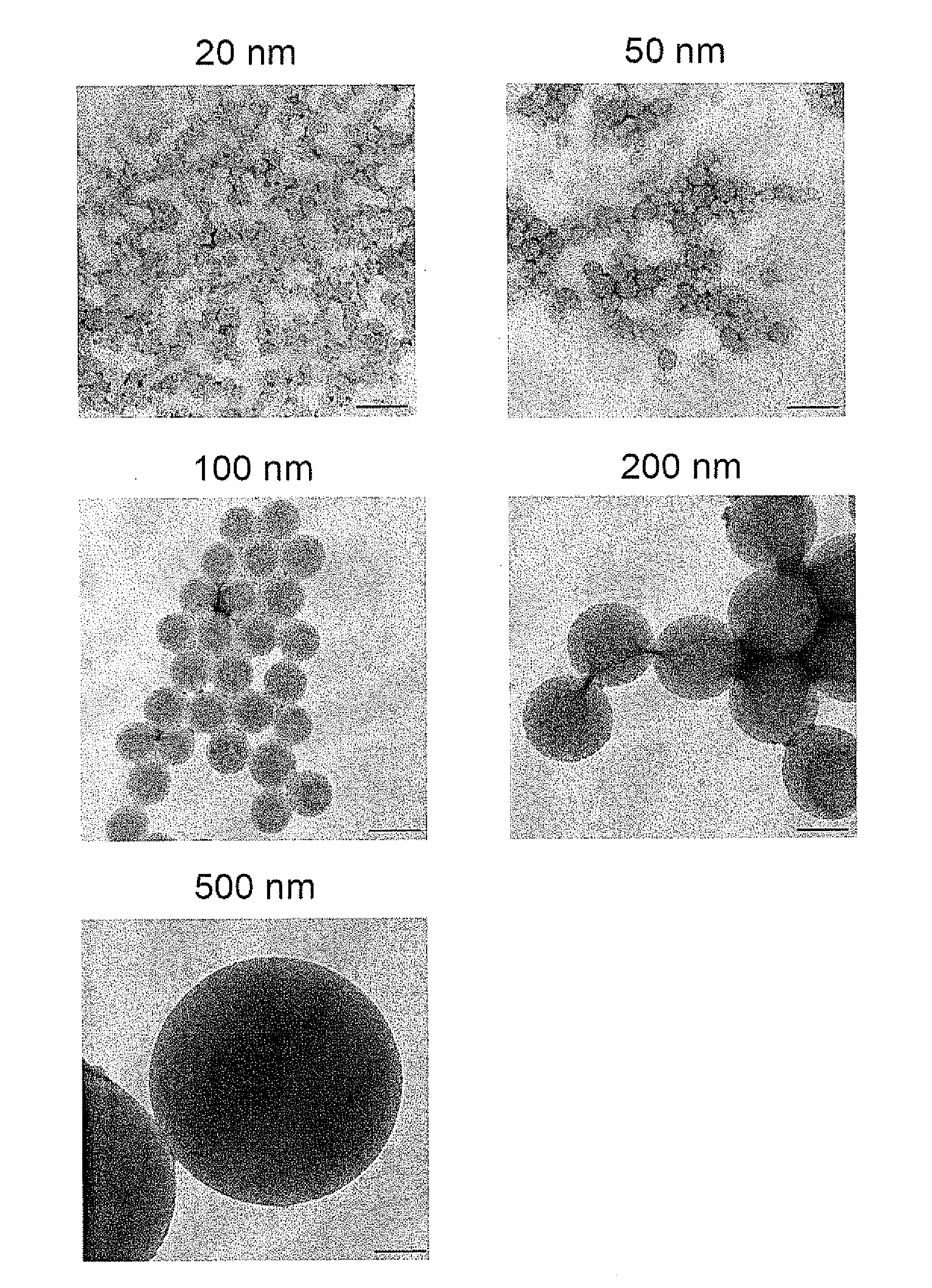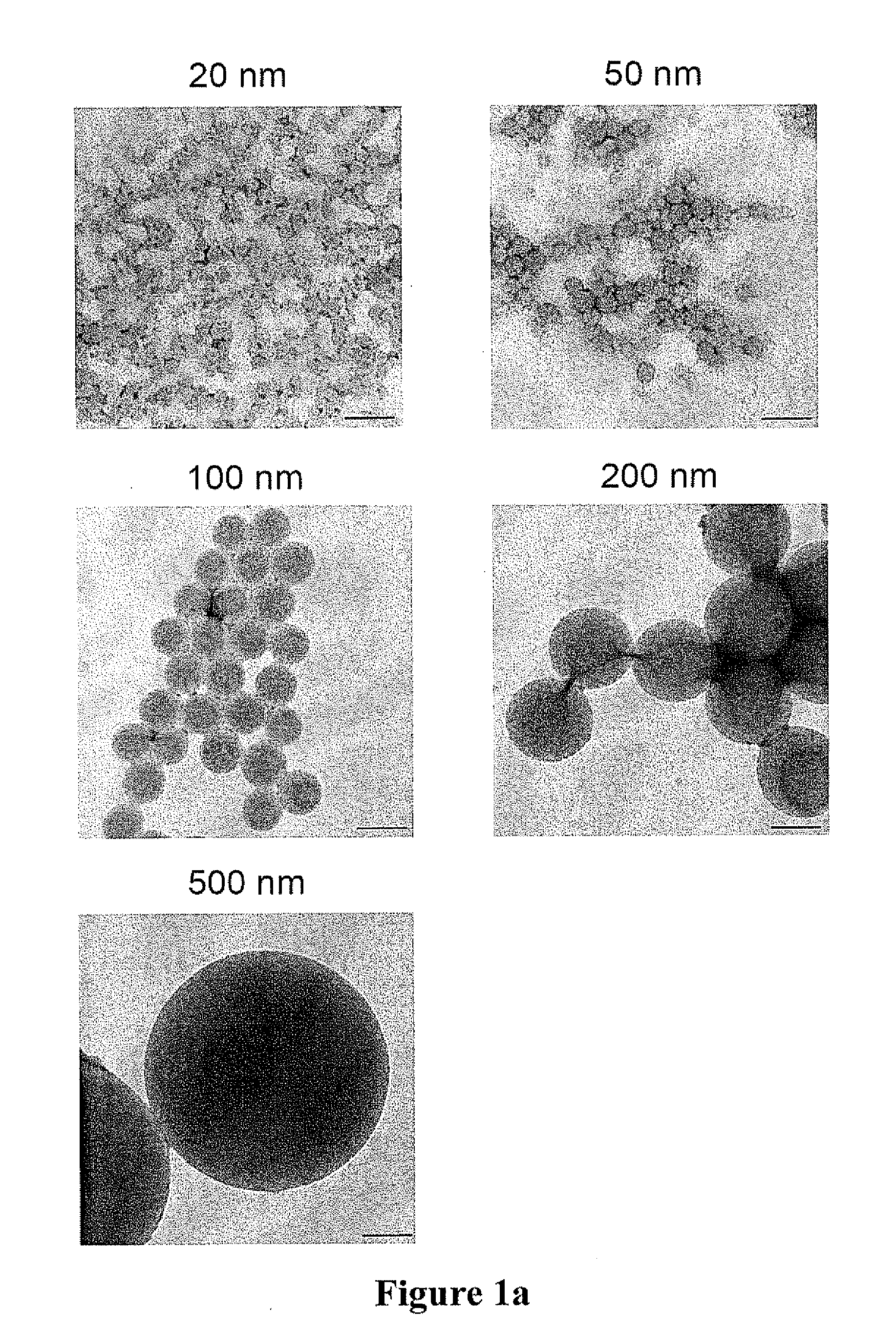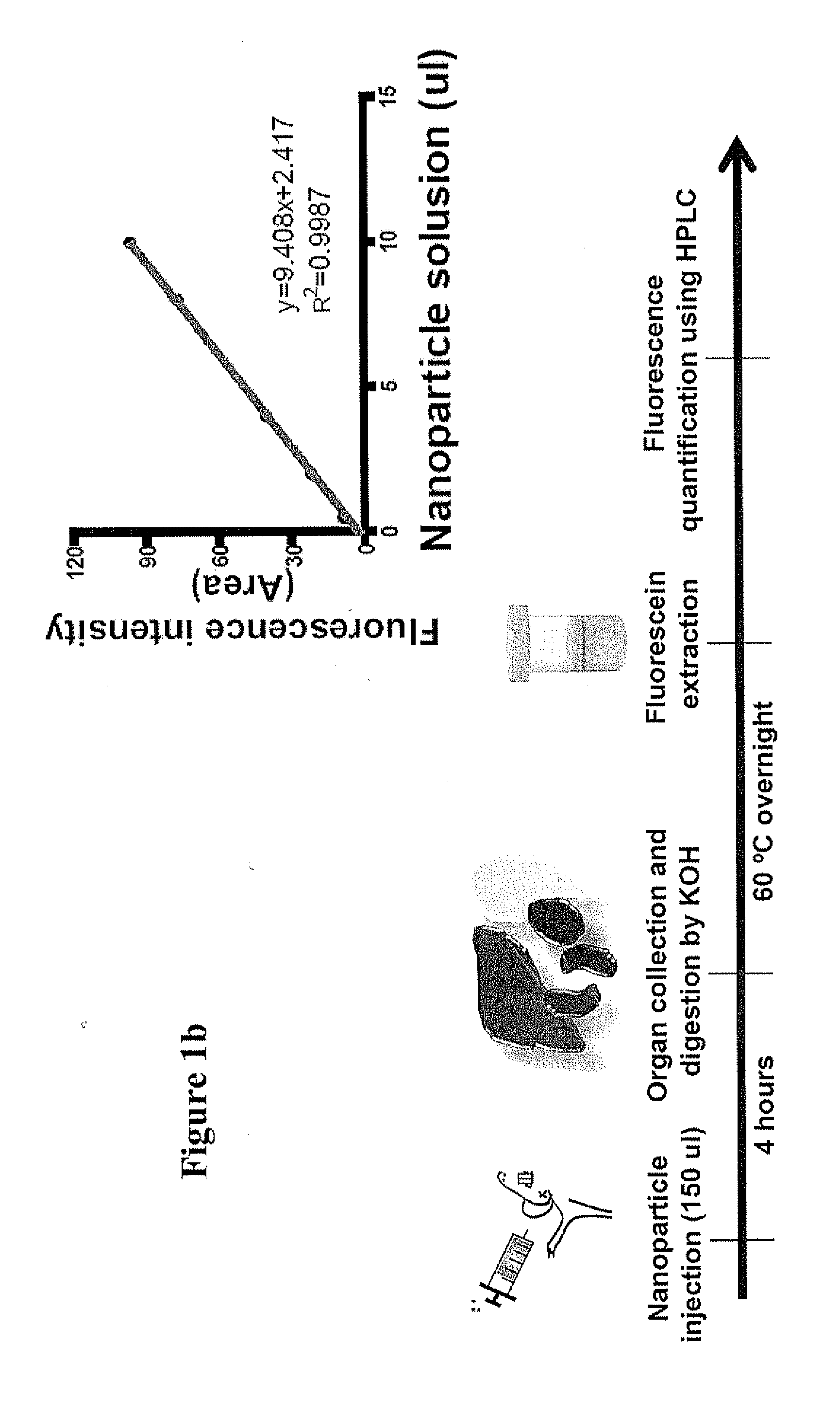Method for screening size of carrier
- Summary
- Abstract
- Description
- Claims
- Application Information
AI Technical Summary
Benefits of technology
Problems solved by technology
Method used
Image
Examples
examples
[0048]To characterize the size-dependent effects of nanoparticles, commercially available 20, 50, 100, 200 and 500 nm fluorescent polystyrene nanoparticles were acquired. The nanoparticle sizes and shapes were confirmed by transmission electron microscopy, which showed uniform size distribution and consistent spherical morphology (FIG. 1a). We detected minimal toxicity, which was similar for the nanoparticles of various sizes, using the (3-(4,5-dimethylthiazol-2-yl)-2,5-diphenyltetrazolium bromide) (MTT) assay for 4 different human cell lines, including A549 carcinoma cells, A2058 melanoma cells, cultured amniotic fluid-derived stem cells (AFSCs), and primary bone marrow mesenchymal stem cells (hMSCs) (FIG. 6). Therefore, we focused our studies on the in vivo characterization of different-sized fluorescent polystyrene nanoparticles following systemic injection.
[0049]As depicted in FIG. 1b, nanoparticles were injected into the jugular vein of mice to investigate the biodistribution o...
PUM
 Login to View More
Login to View More Abstract
Description
Claims
Application Information
 Login to View More
Login to View More - R&D
- Intellectual Property
- Life Sciences
- Materials
- Tech Scout
- Unparalleled Data Quality
- Higher Quality Content
- 60% Fewer Hallucinations
Browse by: Latest US Patents, China's latest patents, Technical Efficacy Thesaurus, Application Domain, Technology Topic, Popular Technical Reports.
© 2025 PatSnap. All rights reserved.Legal|Privacy policy|Modern Slavery Act Transparency Statement|Sitemap|About US| Contact US: help@patsnap.com



